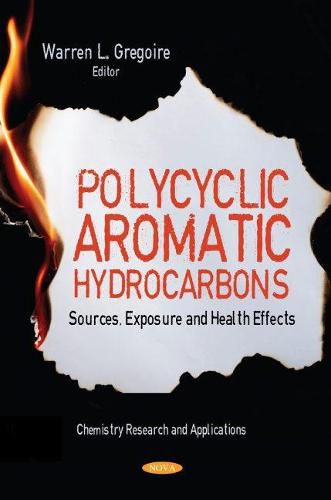Readings Newsletter
Become a Readings Member to make your shopping experience even easier.
Sign in or sign up for free!
You’re not far away from qualifying for FREE standard shipping within Australia
You’ve qualified for FREE standard shipping within Australia
The cart is loading…






Polycyclic Aromatic Hydrocarbons (PAHs) are chemicals that occur naturally in coal, oil, and gasoline, and are also produced when wood, tobacco, and other materials are burned. Exposure to PAHs can lead to negative health consequences, so remediating their presence in the environment is significant. Chapter One uses machine learning and artificial intelligence to explain the behaviour of PAHs in indoor and outdoor environments of a university building. Chapter Two discusses PAH exposure and associated effects in elasmobranchs. Chapter Three focuses on the potential effects of plants on the phytoremediation of agricultural soils and freshwater resources contaminated with PAHs. Chapter Four includes a case study of PAHs levels in samples from the fishery industry. Lastly, Chapter Five evaluates potential associations between biliary PAHs, biomorphometric indices and biliverdin applied as a feeding status proxy in mullet (Mugil liza) from a chronically contaminated estuary in Southeastern Brazil.
$9.00 standard shipping within Australia
FREE standard shipping within Australia for orders over $100.00
Express & International shipping calculated at checkout
Polycyclic Aromatic Hydrocarbons (PAHs) are chemicals that occur naturally in coal, oil, and gasoline, and are also produced when wood, tobacco, and other materials are burned. Exposure to PAHs can lead to negative health consequences, so remediating their presence in the environment is significant. Chapter One uses machine learning and artificial intelligence to explain the behaviour of PAHs in indoor and outdoor environments of a university building. Chapter Two discusses PAH exposure and associated effects in elasmobranchs. Chapter Three focuses on the potential effects of plants on the phytoremediation of agricultural soils and freshwater resources contaminated with PAHs. Chapter Four includes a case study of PAHs levels in samples from the fishery industry. Lastly, Chapter Five evaluates potential associations between biliary PAHs, biomorphometric indices and biliverdin applied as a feeding status proxy in mullet (Mugil liza) from a chronically contaminated estuary in Southeastern Brazil.